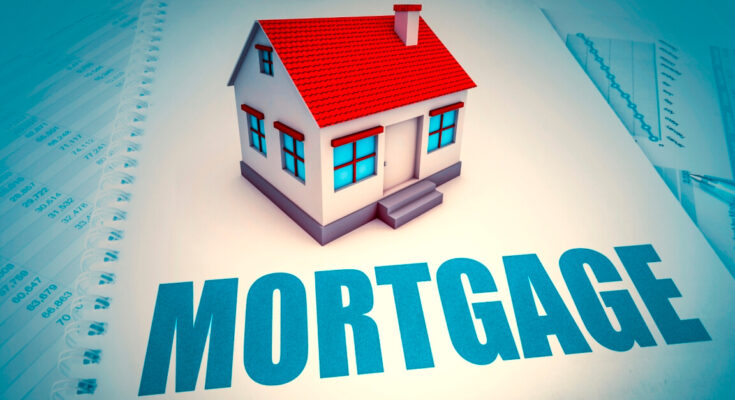Introduction
A mortgage is a loan specifically designed for purchasing real estate, typically a home. It involves borrowing a large sum of money from a lender, which is then repaid over a set period, usually with interest. Understanding the various types of mortgages, the process of obtaining one, and best practices for managing a mortgage can help potential homeowners make informed decisions and secure favorable terms. This guide provides a detailed overview of mortgages.
Types of Mortgages
Fixed-Rate Mortgages
A fixed-rate mortgage has an interest rate that remains constant throughout the life of the loan. This means that the monthly payments for principal and interest remain the same, providing stability and predictability for borrowers.
- Pros: Predictable payments, protection against interest rate increases.
- Cons: Generally higher initial interest rates compared to adjustable-rate mortgages.
Adjustable-Rate Mortgages (ARMs)
An adjustable-rate mortgage has an interest rate that can change periodically, typically in relation to an index such as the LIBOR or the U.S. Treasury rate. ARMs usually start with a lower interest rate compared to fixed-rate mortgages.
- Pros: Lower initial interest rates, potential for lower payments if interest rates decrease.
- Cons: Risk of higher payments if interest rates increase, potential for payment shock.
FHA Loans
FHA loans are backed by the Federal Housing Administration and are designed to help first-time homebuyers or those with less-than-perfect credit. These loans require lower down payments and have more lenient credit requirements.
- Pros: Lower down payment requirements, easier qualification criteria.
- Cons: Mortgage insurance premiums required, limits on loan amounts.
VA Loans
VA loans are available to veterans, active-duty service members, and certain members of the National Guard and Reserves. These loans are backed by the Department of Veterans Affairs and often come with favorable terms, including no down payment requirements.
- Pros: No down payment, competitive interest rates, no private mortgage insurance (PMI).
- Cons: Eligibility requirements, funding fees may apply.
USDA Loans
USDA loans are backed by the U.S. Department of Agriculture and are intended for rural homebuyers. These loans offer low-interest rates and no down payment options for eligible applicants.
- Pros: No down payment, low-interest rates, lenient credit requirements.
- Cons: Geographic and income eligibility requirements, mortgage insurance required.
Jumbo Loans
Jumbo loans are used for financing properties that exceed the conforming loan limits set by the Federal Housing Finance Agency (FHFA). These loans are typically used for luxury homes or properties in high-cost areas.
- Pros: Can finance high-value properties, flexible terms.
- Cons: Higher interest rates, stricter credit requirements, larger down payment needed.
The Mortgage Process
Pre-Approval
Before shopping for a home, it’s advisable to get pre-approved for a mortgage. This involves submitting financial information to a lender, who will then determine how much you can borrow.
- Pros: Provides a clear budget, strengthens your offer when bidding on a home.
- Cons: Requires a hard credit check, pre-approval is not a guarantee of final loan approval.
House Hunting and Offer
Once pre-approved, you can start looking for homes within your budget. When you find a suitable property, you make an offer, which the seller can accept, reject, or counter.
Loan Application
After your offer is accepted, you will formally apply for a mortgage. This involves providing detailed financial information and documentation to the lender.
Loan Processing and Underwriting
The lender will process your application and perform underwriting, which involves verifying your financial information, assessing your creditworthiness, and appraising the property.
Closing
If the loan is approved, you will proceed to closing, where you will sign the final documents and pay any required closing costs. The lender will then disburse the funds, and you will take ownership of the property.
Best Practices for Managing a Mortgage
Budgeting
Create a detailed budget that includes your mortgage payment, property taxes, homeowners insurance, and maintenance costs. Ensure that your housing costs do not exceed 28-30% of your gross monthly income.
Making Extra Payments
If possible, make extra payments toward your principal. This can reduce the total interest paid over the life of the loan and shorten the repayment period.
Refinancing
Consider refinancing your mortgage if interest rates drop significantly or if you want to change your loan terms. Refinancing can lower your monthly payments, reduce your interest rate, or convert an ARM to a fixed-rate mortgage.
Maintaining Good Credit
Keep your credit score high by paying bills on time, reducing debt, and avoiding new credit inquiries. A good credit score can help you secure better mortgage terms and lower interest rates.
Emergency Fund
Maintain an emergency fund to cover unexpected expenses such as home repairs or job loss. This can help you avoid missing mortgage payments and protect your financial stability.
Regularly Review Your Mortgage
Periodically review your mortgage terms and financial situation. Stay informed about changes in interest rates and the housing market to make timely decisions regarding refinancing or selling your property.
Conclusion
A mortgage is a significant financial commitment that requires careful planning and management. By understanding the different types of mortgages, navigating the application process, and following best practices for mortgage management, borrowers can secure favorable terms and maintain financial stability. Whether you are a first-time homebuyer or an experienced homeowner, staying informed and proactive about your mortgage can help you achieve your homeownership goals while minimizing financial stress.
For more information, click here.



